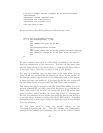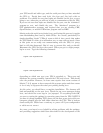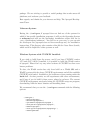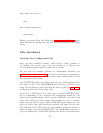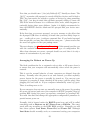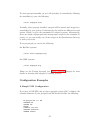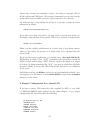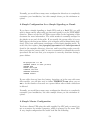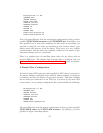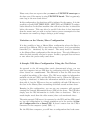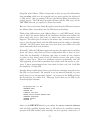Notice that we have not specified a device. In doing so, apcupsd will try
all the well known USB ports. We strongly recommend you use this (empty
device address) form unless you have a good reason to do otherwise.
An alternate way of specifying the device is to specify a range of device
addressess as follows:
DEVICE /dev/usb/hid/hiddev[0-15]
If you have more than one device, you may need to specify each device in-
dividually using absolute device paths. This is not, however, recommended.
DEVICE /dev/usb/hiddev0
Please use the explicit specifications of a device only if your know exactly
what you are doing. In general, it is much easier to let apcupsd find the
device itself.
If you use the range specification, you should enter /dev/usb/hiddev[0-
15] literally as shown. The “[0-15]” expression tells apcupsd to search all
hiddev devices until it finds a UPS. You can restrict the search to a subset
of devices by using something like “[0-4]”, but keep in mind this will limit
apcupsd’s ability to locate the UPS if the kernel relocates it to a different
device node.
On Debian systems, the hiddev devices are not automatically defined. As a
consequence, you will need to run the make-hiddev script in the examples
directory of the source.
A Simple Configuration for a SmartUPS
If you have a Smart UPS using the cable supplied by APC, or you build
a CUSTOM SMART cable outlined in the cables chapter, a very simple
configuration file would look like the following:
## apcupsd.conf v1.1 ##
UPSCABLE smart
UPSTYPE smartups
DEVICE /dev/ttyS0
LOCKFILE /var/lock
UPSCLASS standalone
UPSMODE disable
53




